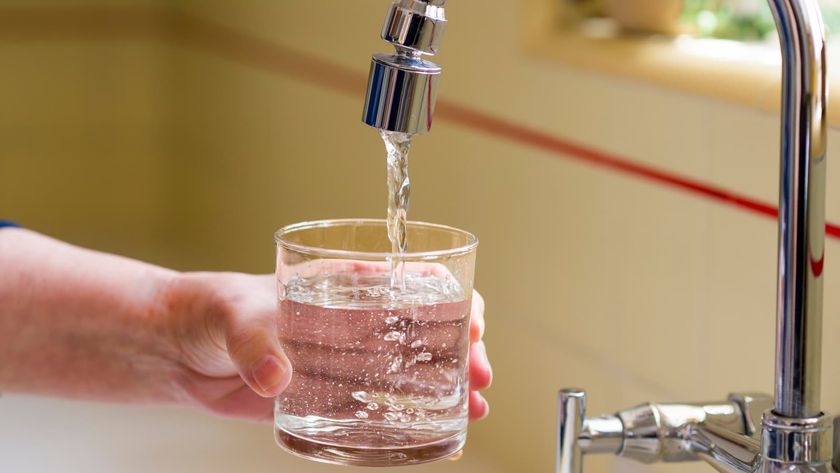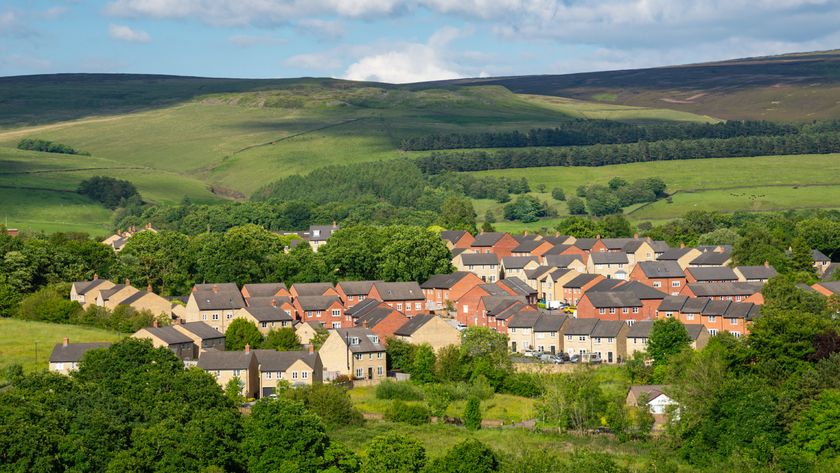Why is my PIV unit making my house cold? Pros reveal why and how to fix the issue
If a PIV unit is making your house cold find out the reasons behind the drop in temperature and how to resolve the issue

Positive Input Ventilation is one option for keeping away condensation, damp and mould. But, the downside is a PIV unit making your house cold. They typically draw air from a loft space where the air temperature differs from the home.
In the colder months the temperature of the air in a loft space will drop. This means that a Positive Input Ventilation unit will be drawing colder air into the home. But there are solutions to help balance out the temperatures and stop your home feeling cold. Here the experts delve into why and what you can do.

Currently Larry heads up Envirovent's Technical Support Team as well providing internal and external training on ventilation, regulations and specification, including managing Envirovent's NICEIC approved assessment centre.
PIV making the house cold? The reasons why
A Positive Input Ventilation unit is effectively taking air from a source, typically a loft space, and pumping the air out through a diffuser which is typically found in the ceiling of an upstairs room if the PIV unit is installed in the loft.
Homebuilding & Renovating's energy expert David Hilton, owner of Heat and Energy Ltd points out that the purpose of PIV is to, “Dilute out the stale air in the whole home”. If you don’t have a PIV unit installed, the stale air can linger in the home causing issues, as Michael Zohouri of Pyramid Eco explains, “Without a PIV unit, homes can face common issues like condensation, dampness, poor air quality, stale air, and even potential health concerns related to mould and humidity.” He adds, “While PIV units can be helpful in addressing ventilation issues, there are some limitations.”
One of those is that it can make your house feel cold. Larry Soper, Technical Services Manager at Envirovent give a quick overview of the common issues, “Reasons for a dwelling not benefiting from PIV can be down to poor specification or installation, draughty buildings, single glazing, or walls, penetrating or rising damp, poor insulation, or cold bridging in the building fabric.”
He adds: "A loft mounted PIV unit filters air from the loft space and gently delivers it into a central location in the home. During the colder months, the loft space is generally 3-5°C warmer than outside air due to solar gain.”
But while the air is still warmer than the outside air, it will still be colder than the air in the home, hence the reason why a home feels cold as Hilton succinctly explains, “The issue I have with most installations is that it brings cold air into the home in winter and warm air in in summer.”
And, It's also worth noting that some PIV systems, though not so common, will use a roof vent mounted on the roof above the loft. The air that it brings in will be even colder than the air in a loft space.

With more than 35 years of expertise, David is a seasoned renewables and ventilation installer, recognised for his longstanding contributions to Homebuilding and Renovating magazine. Holding membership in the Gas Safe Register and armed with a Masters degree in Sustainable Architecture, David stands as an authoritative figure in sustainable building and energy efficiency. His extensive knowledge spans building fabrics, heat recovery ventilation, renewables, and conventional heating systems. Additionally, he serves as a distinguished speaker at the Homebuilding & Renovating Show.

Michael Zohouri founded Pyramid Eco in 2011, evolving the company from property maintenance to a leader in sustainable retrofitting for social housing. With a passion for energy efficiency and ventilation, Michael is committed to creating healthier, more sustainable homes while addressing key challenges like thermal bridging and air quality.
Try these PIV units to improve ventilation

This loft PIV unit is designed with an integrated 400W heater to help supply tempered and filtered air. A sensor helps maintain the set temperature point.
Solutions to stop the cold
The solution to solving a cold home initiated by PIV will depend on what the issue is. But there are some simple and straightforward actions that will help resolve the issue as Soper reveals, “Keeping internal doors closed with adequate undercuts, having a dwelling adequately heated, a PIV unit installed and set correctly should all assist in preventing the dwelling from being cold. “ Here Soper adds a few rules to follow to help lessen the cold issue a PIV unit can cause.
1. Set up correctly
It makes sense that to get the best out of a PIV unit you will need to set it up correctly as Soper says, “PIV units should be set to deliver an appropriate airflow taking into consideration size of dwelling, number of bedrooms and occupancy.”
2. Install PIV with heater
There are different types of PIV units available and if you notice the difference in interior temperatures , especially during the colder months Soper suggests you install a unit with a heater, “PIV units can have a comfort heater that will further temper the air, these are generally automatically controlled.” He continues by explaining why, “This air is then delivered centrally to the dwelling, recovering further energy at ceiling height (as warm air rises), before gently distributing around the dwelling reducing humidity and surface condensation to help improve indoor air quality and minimise condensation and mould.”
3. Get a pro to install PIV unit
Installing a PIV unit is not a job for the average DIYer, and to get the best from one its should be installed by a qualified installer as Soper shares, “PIV along with any ventilation should be specified and installed by persons competent and skilled to do so, this will ensure best performance of any ventilation system while ensuring dwellings have adequate ventilation.”
In addition to these suggestions there are a couple of other considerations to take into account if you have a PIV unit located in the loft. A simple solution is to seal up draughts in the loft space. This is especially important if you have large draughts letting in cold air. Another option is to add or upgrade your insulation if need to help reduce varying temperatures and condensation. Check out our How thick should loft insulation be guide for more insight.
Both of these will help keep a more constant temperature in the loft, helping to lessen the chances of cold air being distributed around the home.
Soper concludes by saying, “If PIV units are set up and correctly installed, the area where the air is delivered will always be slightly cooler and feel fresher” He adds, “The rest of the property should benefit from this and reduce annual heating cost by around 10%.
FAQs
Is PIV suitable for large open plan areas?
While Positive Input Ventilation has a lot of positives it is not the best choice for every home as Soper shares, “While PIV can be suitable for many dwellings, careful consideration is required, as some dwelling may be better suited with an alternative ventilation strategy.”
Zohouri reiterates the point, “PIV units tend to struggle in large open plan spaces. These areas dilute the positive pressure effect that PIV relies on, leading to uneven air distribution and diminished performance.” He adds, “For open plan layouts, alternative ventilation systems that actively circulate air throughout the space might be more effective.”
Are PIV units all the same size?
No, PIV units are available in different sizes as Zohouri shares, “PIV units are available in various sizes to accommodate different home dimensions, but getting the right size is crucial. Even larger units have their limitations”.
Here Zohouri lists the ideal sizes you’ll need for different size homes:
Small homes
A unit with an airflow capacity of around 300–400 m³/h is typically sufficient.
Average homes
Units with 500–600 m³/h capacity are a common choice.
Large homes
For larger spaces, units offering up to 1000 m³/h may be needed.
To finish he says, “It’s worth noting that bigger units often consume more energy and can be noisier, which may not translate to significantly better performance.”
Positive Input Ventilation (PIV) is just one type of ventilation that helps keep a home condensation and damp-free. Check out our Natural ventilation, Loft ventilation and Building Regulations Part F guides for more info.
Get the Homebuilding & Renovating Newsletter
Bring your dream home to life with expert advice, how to guides and design inspiration. Sign up for our newsletter and get two free tickets to a Homebuilding & Renovating Show near you.
Steve Jenkins is a freelance content creator with over two decades of experience working in digital and print and was previously the DIY content editor for Homebuilding & Renovating.
He is a keen DIYer with over 20 years of experience in transforming and renovating the many homes he has lived in. He specialises in painting and decorating, but has a wide range of skills gleaned from working in the building trade for around 10 years and spending time at night school learning how to plaster and plumb.
He has fitted kitchens, tiled bathrooms and kitchens, laid many floors, built partition walls, plastered walls, plumbed in bathrooms, worked on loft conversions and much more. And when he's not sure how to tackle a DIY project he has a wide network of friends – including plumbers, gas engineers, tilers, carpenters, painters and decorators, electricians and builders – in the trade to call upon.











